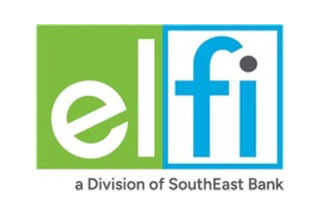The 2026-27 FAFSA Is Live — One Week Ahead of Schedule

The Free Application for Federal Student Aid, or FAFSA, is officially live — one week early.
The Department of Education released the 2026-27 FAFSA Wednesday ahead of its traditional Oct. 1 launch date. The FAFSA is a crucial document that allows students pursuing higher education to apply for federal, state and institutional funding. Nearly 20 million students submit the form annually.
“The Trump administration is launching the earliest FAFSA form in history,” Education Secretary Linda McMahon said in an announcement video.
The formal debut comes one week after the Education Department expanded its FAFSA beta test to allow all students and families to submit the form early. The department says 43,531 people started a FAFSA during the testing period, which began Aug. 3. Of those, over 27,000 forms were submitted, and 23,840 were successfully processed without rejection.
The new form is available on the Federal Student Aid website. It covers the academic periods between July 1, 2026, and June 30, 2027.
Under the Biden administration, the previous two FAFSA cycles were plagued by delays, glitches and errors largely because former President Joe Biden's Education Department was tasked with overhauling the form as part of the FAFSA Simplification Act, which was signed into law during President Donald Trump's first term.
As part of this overhaul, the FAFSA form has shrunk from over 100 questions to about 30 or 40.
And while McMahon's claim that the FAFSA has not been released this early before is true, most of the required changes to the form were already handled by the previous administration.
The Education Department tells Money in a statement that the new FAFSA can be submitted in as few as 15 minutes and that there is “no difference” between the beta version of the form and the official one. That means families who successfully submitted the beta form since last month won’t need to make any changes or resubmit it.
FAFSA 2026-27: What’s changing this year
The FAFSA has a reputation of being a notoriously hard-to-complete form that requires families to track down obscure financial documents. The 2026-27 version is the latest effort in a years-long endeavor to make it simpler to fill out.
Some updates include small changes intended to make the FAFSA more accessible and easier to understand, according to Stacey MacPhetres, senior director of education finance at College Coach, an admissions consulting firm. She also highlights a streamlined identity-verification process for students and guardians who are creating a studentaid.gov account, which is required to fill out the FAFSA.
According to the Education Department, when using a Social Security number, this verification process is now instant. Parents and guardians without a Social Security number can still proceed and will be asked a series of questions about their identity for verification through the credit bureau TransUnion.
It’s also getting easier for dependent students to invite their parents to complete their sections of the FAFSA. Now, students can share a code for them to type in instead of needing to input personal contact details and dates of birth of their parents.
“This redesign will improve completion rates, increase satisfaction and reduce call center volume,” the Education Department says.
MacPhetres also notes two changes from Trump’s recent One Big Beautiful Bill Act that affect federal aid eligibility. Assets for family farms and small businesses are now excluded from FAFSA reporting, she says. In addition, foreign income is now automatically included in earnings calculations for the Pell Grant.
When should you fill out the FAFSA?
The 2026-27 FAFSA is open now through June 30, 2027. Corrections must be submitted by Sept. 12, 2027.
That federal deadline is far off, but financial aid experts recommend students fill out the FAFSA as soon as possible to ensure they meet all priority deadlines set separately by colleges. Some state- and college-level aid is also awarded on a first-come, first-served basis.
So: The sooner the better.
"Even if you think you might not qualify for federal need-based aid, the FAFSA can open doors to other types of aid that make college more accessible and affordable," Melanie Storey, president and CEO of the National Association of Student Financial Aid Administrators, says in a statement shared with Money.
Colleges and trade schools, for instance, set their own deadlines. For incoming students who have not yet committed to a school, the Education Department recommends double-checking with each institution they're interested in to find out what its FAFSA timeline is.
For state-level grants provided by Alaska, Georgia, Illinois, Indiana, Kentucky, Montana, Nevada, Oregon, South Carolina, Vermont, Virginia and Washington, the states recommend applying as soon as possible. Submission deadlines for most other states range between 2026 and early 2027.
Only two states have submission deadlines as late (or later) than the federal one: New York (Jun. 30, 2027) and Louisiana (Jul. 1, 2027).
"The biggest mistake you can make," Storey says, "is not applying."
More from Money:
New Federal Lending Rules Could Push Many Master's Degree Borrowers Into Private Student Debt






